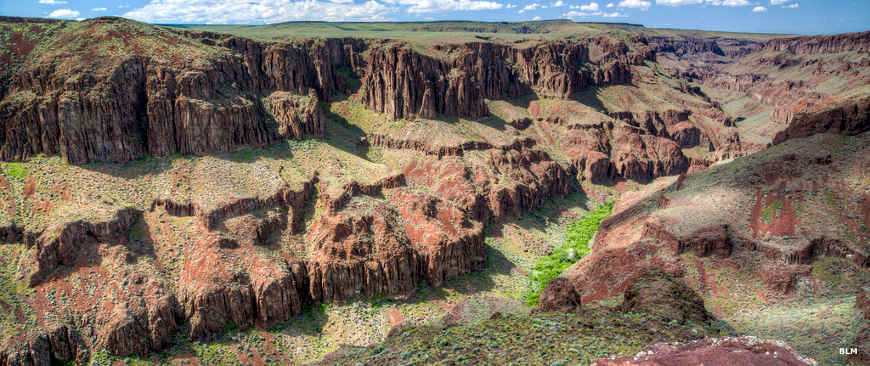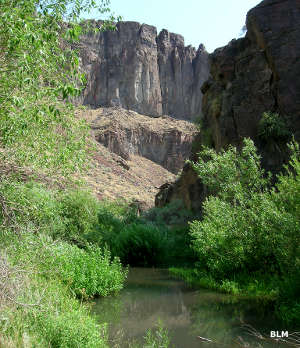Big Jacks Creek Wild and Scenic River

Looking down on Big Jacks Creek

The entire 36 miles of Big Jacks Creek within Big Jacks Creek Wilderness is designated Wild & Scenic. Beyond the wilderness boundary, there's only a few miles of river before Big Jacks Creek empties into the Bruneau River, another Wild and Scenic River with its own designated wilderness area.
A product of extensive volcanic activity during the Miocene Epoch (24 to 5 million years ago), the region is part of the Owyhee Canyonlands, the largest concentration of sheer basalt/rhyolite canyons in the western United States. Other rivers in the Big Jacks Creek drainage area also designated Wild and Scenic include Duncan, Wickahoney and Cottonwood Creeks.
Big Jacks Creek is a perennial stream and flows through the basalt/rhyolite canyons in a slow meander with dense riparian vegetation throughout the canyon floor. Most of the stream has enough waterflow to support a small population of redband trout, a BLM-sensitive species and an Idaho species of special concern. The area is also known for its population of greater sage-grouse, bald eagles, yellow-billed cuckoos, ferruginous hawks, prairie falcons, several bat species, several neotropical migratory bird species, Columbia spotted frogs and western toads. The lava cliffs also support spotted and Townsend's big-eared bats, both Idaho BLM sensitive species.
Most folks reach the area by traveling dirt roads around the eastern and southern sides of the wilderness area. The canyon itself drops below an otherwise relatively flat plain. The area is well-known among hunters for its significant mule deer population.
Among the tributaries of Big Jacks Creek are Duncan, Cottonwood and Wickahoney Creeks, all also designated Wild & Scenic Rivers.

Along Big Jacks Creek in the fall

Big Jacks Creek Canyon further upstream